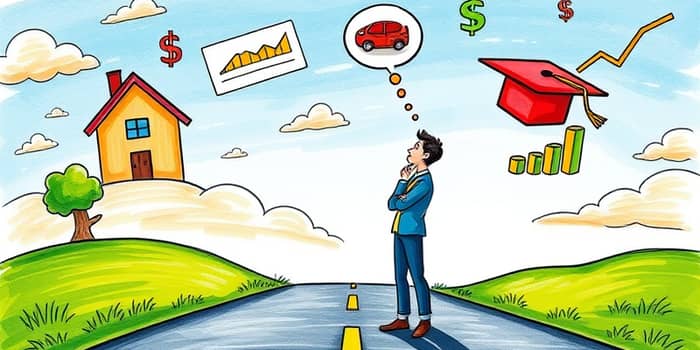
Every major outlay in life—from buying a home to pursuing further education—carries more than just a price tag. Understanding what you sacrifice when making these decisions can be the difference between regret and confidence. By learning to weigh trade-offs with precision, you unlock a powerful tool for crafting a future aligned with your goals.
Opportunity cost is defined as the potential value or benefit foregone when choosing one alternative over another. It represents the cost of the next best alternative that you must sacrifice when making a decision. While often discussed in economics, this concept applies to every facet of our daily choices.
In formulaic terms, you calculate opportunity cost by subtracting the return or benefit of your chosen option from the return or benefit of the best forgone alternative. This simple equation empowers you to quantify abstract trade-offs in clear, monetary or qualitative terms.
Large purchases—homes, vehicles, electronics, business investments, or advanced degrees—tie up significant resources: money, time, and emotional energy. When you commit to one option, you inherently rule out other possibilities that might offer greater reward or satisfaction.
Failing to assess opportunity cost can lead to suboptimal decisions or lingering regret. By embracing this perspective, you cultivate long-term decision-making confidence and ensure each choice advances your broader life ambitions.
Concrete illustrations make the concept tangible, revealing hidden trade-offs behind everyday and once-in-a-lifetime choices.
Investments vs. Debt Repayment
Scenario: You have $10,000 and can either invest in a mutual fund at 8% annual return or pay off a car loan at 4% interest. If you clear the loan, your opportunity cost is the extra 4% return—about $400 per year before fees.
Consumer Electronics
Choosing between a $299 and a $339 laptop yields a $40 direct opportunity cost. Unless the additional features drive long-term productivity gains, those savings could be redirected toward a more impactful goal.
Real Estate vs. Market Investments
A $400,000 home appreciating at 3% annually yields $12,000 per year, while diversified index funds might deliver 6–8%, or $24,000–$32,000 annually. The differential—up to $20,000 per year—represents the opportunity cost, aside from tax, maintenance, and emotional factors.
Education Decisions
Attending graduate school full-time often means forgoing a $60,000 annual salary for two years. That totals $120,000 in lost earnings, plus tuition. Yet, if the degree secures a significant salary increase, the long-term career benefits may outweigh this upfront sacrifice.
Recurring Habits
An $8 restaurant lunch versus a $3 homemade meal each workday costs an extra $5. Over 250 workdays, that amounts to $1,250 per year—money that could be invested or used for a memorable experience.
Assessing opportunity cost transforms financial decisions into a holistic evaluation of what truly matters. It moves you beyond the surface price and into a broader perspective beyond price tag. This mindset cultivates foresight, aligning each purchase or investment with your long-term aspirations.
Whether you’re tempted by a sleek new gadget, contemplating a career pivot, or evaluating a property purchase, deliberate attention to opportunity cost helps you choose with clarity. You’ll understand not just what you buy, but what you relinquish, empowering you to make choices that resonate with both your wallet and your values.
By regularly applying this framework, you build a disciplined approach to resource allocation. Over time, these incremental improvements in decision-making lead to significant financial and personal growth. Ultimately, the true cost of any decision is revealed when you compare what you gain against what you leave behind.
Start today: next time you face a big-ticket choice, pause to calculate the unseen trade-offs. The insight you gain will guide you toward smarter, more fulfilling outcomes—turning every purchase into a strategic step on your journey to lasting success.
References













